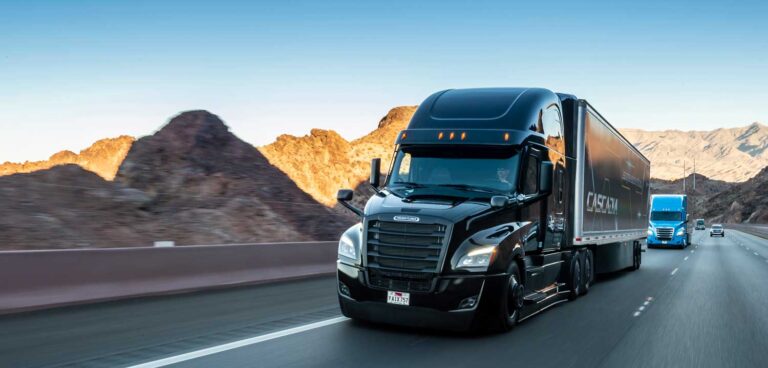Daimler Trucks has revealed plans to invest €500m (US$570m) as part of a global push to bring highly automated trucks (SAE level 4) to the road within a decade.
Highly automated (level 4) driving is characterized as automated travel in defined areas and between defined hubs without any expectation that a user will respond to a request to intervene. Highly automated trucks offer enormous advantages in many areas. They enhance safety in traffic thanks to a redundancy of systems and a multitude of sensors and systems that never get tired or lose attention – because today, a great majority of accidents are still due to human error.
Level 4 highly automated trucks also improve efficiency and productivity, among other things, through higher utilization of the vehicles. They make it possible to travel during light traffic times, for example at night, and thus avoid traffic jams through intelligent route management. This has positive effects for truck customers and for the entire economy: the competitiveness of an economy is strongly correlated with the efficiency of logistics. This aspect is especially relevant as global road freight volume is expected to more than double between 2015 and 2050.
Martin Daum, member of the board of management of Daimler with responsibility for Daimler Trucks & Buses: “As a leader in our industry, we’ve been pioneering automated trucking. In 2015 our Freightliner Inspiration Truck got the first-ever road license for an automated commercial vehicle. Now we’re taking automated trucking to the next level. We’re ready to launch the first partially automated Freightliner Cascadia in 2019 – and next, we will tackle highly automated trucks. Highly automated trucks will improve safety, boost the performance of logistics, offer a great value proposition to our customers, and thus contribute considerably to the sustainable future of transportation.
The sheer size of a truck makes higher demands on the technology than in the passenger car sector. For example, the driving behavior due to a greater mass or other deceleration values, as well as other driving characteristics, for example on bends, place much higher demands on the system. The operating conditions in the transport industry are also much tougher. To enable efficient delivery cycles and to meet customer requirements for fast delivery, the vehicles must be operated for as long as possible. This must not lead to any restrictions in durability or reliability, for example under a wide variety of weather conditions and extreme vibrations.
Level 4 trucks require significantly more sensors than their predecessors, with all of them also higher performing. This leads to a completely new level of data volume but also places extremely high demands on the quality of data processing. With their specific strengths, each sensor makes a contribution to the overall performance and safety. Three technological approaches form the basis – radar, camera and lidar. All safety-relevant functions will be equipped with a redundant system that is capable of seamlessly taking over in case the primary control system malfunctions.
Daimler Trucks is creating 200 jobs in highly automated driving. The newly created positions and roles are to be filled primarily by mechatronics engineers or robotics specialists with IT and programming skills. The main location is Daimler Trucks & Buses’ new Automated Truck Research & Development Center in Portland, Oregon. Engineers there will work in close cooperation with their colleagues in R&D centers at Daimler Trucks locations in Stuttgart, Germany, and Bangalore, India.


